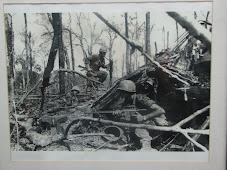Background to the Vietnam War
The Vietnam War was a war of national liberation against a colonial ruler. It was also a civil war, between the ideas of capitalism and communism. It was a war that involved great powers such as the United States and the USSR and their allies.
In the past, Vietnam has been subjected to foreign rule by China and more recently by Japan and France. During French rule of Vietnam they put a stop to nationalist movements that tried to gain independence. They used the countries resources and exploited the people.
In 1930 Ho Chi Minh founded the Indochinese Communist Party and in 1941 he formed the Vietminh League. He wanted independence and socialism for Vietnam. The Vietminh fought the French for control of their land for nine years and finally defeated the French at Dien Bien Phu in 1954.
The Vietminh had control of the north but in the south the French set up a rival government that was also supported by the United States. Fearing the spread of communism, the US had provided the French with financial support and war materials and military advisors.
In the South, Vietnamese people unhappy with the French and US backed rule formed an organization known as the Vietcong. The Vietcong began to wage guerilla warfare against the South Vietnamese rule from the early 1960s.
The civil war to which the USA and its allies, which included Australia, were involved was not simply a war between North and South. It was a war where most of the fighting against the South Vietnamese government was done by the Vietcong rather than the North Vietnamese soldiers.
The war was different from previous wars. The Americans and their allies soon found that their enemy was often hard to recognize. The Vietcong were experts at guerrilla warfare. They lived among the villagers and had their support in most areas. There was no front line, and no clear distinction between Vietcong fighters and civilians.
The USA and its allies had an enormous superiority in firepower, military technology, however, the Vietcong knew the countryside and were tough fighters. They also gained supporters as US troops destroyed peasant villagers and killed civilians in search and destroy missions and bombing raids.
The Domino Theory
US military involvement increased from 300 military advisors in 1965 to 100,000 troops in 1965. By 1968 this had grown to 500,000. To justify this intervention the US supported the domino Theory that if one of the countries of South-East Asia fell to communism this would lead to the fall of another and so on.
Subscribe to:
Post Comments (Atom)



No comments:
Post a Comment